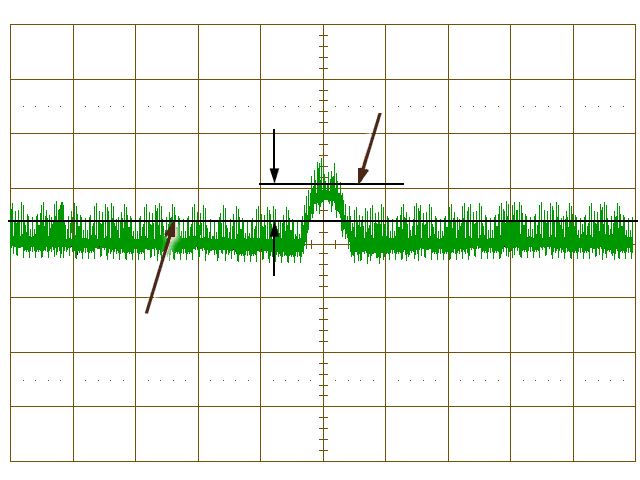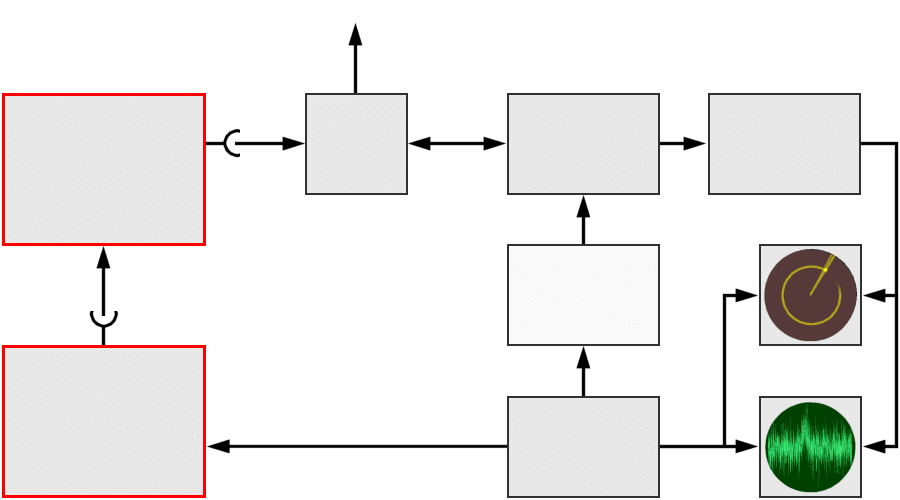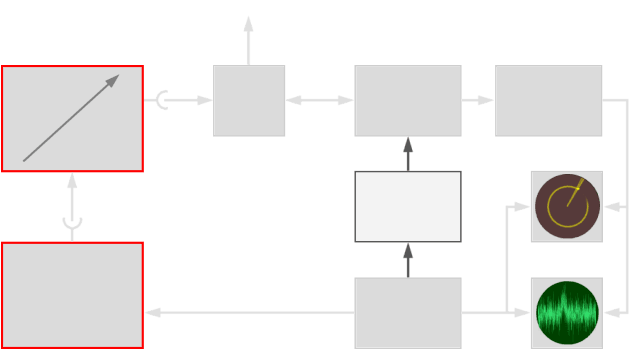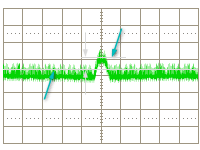Sensitivity Level
There is no standard definition of sensitivity level. The term MDS conveys two meanings:
Minimum Detectable Signal (MDS)
The term Minimum Detectable Signal (MDS) is often used
for Prmin
but can cause confusion because a receiver may be
able to detect a signal but not properly process it.
Minimum Discernible Signal (MDS)
MDS can also be confused with Minimum Discernible Signal, which is
frequently used when a human operator is used to interpret the reception results.
A human interpretation is also required with minimum visible signal (MVS) and tangential sensitivity. Invariably, the received signal power is competing with some interfering signal in order to be detected or recognised. Interfering signal sources may be ground or sea returns, meteorological clutter returns, atmospheric reflections, jamming, or more likely, random noise generated within the receiving circuitry. The latter source is always present to some degree, while the other sources are variable and can be zero. Therefore, the internal noise power is normally used for determining the maximum range of the radar system. The maximum range performance is determined by a very small signal to noise ratio when the signal begins to fade and become indistinguishable from the noise.
This condition gives a „maximum theoretical range” while noting that the maximum practical range varies considerably due to various losses. Among these are system losses, antenna imperfections, receiver non-linearity, undesirable wave propagation, and external noise sources such as jamming.
Minimum Discernible Signal (MDS)
The term minimum discernible signal is often used when the echo signal of a target to be recognized by an operator on the screen. The signal then has to be only a little larger than the noise level. The minimum discernible signal is defined as the useful echo power at the antenna, which gives on the screen a discernable blip.
Its value is determined at an A-scope or a PPI and is generally expressed in dBm; typical values are between -110 dBm ... -113 dBm which represents very small signals. Unfortunately this measurement is falsified often by subjective estimation.

noise level
Figure 1: Signal-Noise-Ratio on an oscilloscope
Minimum Detectable Signal (MDS)
The measurement conditions for the receiver sensitivity at radar device are not standardized. These depend on predetermined by the manufacturer measurement and test requirements. The result of the measurement itself is often referred to by the acronym MDS.
Minimum Detectable Signal (MDS) is a specific value of minimum receivable power (Prmin) The minimum detectable signal is defined as the useful echo power at the antenna, which gives at the output of the IF amplifier (just before detection), a signal which lies 3 dB above the mean noise level. The MDS is generally expressed in dBm; typical values are between –100 and –103 dBm.
But the actual value of MDS (or Prmin) depends on a number of factors and choices which are ultimately related to the statistics of radar detection.
Much effort has been devoted to the design of low-noise input stages (Low Noise Amplifiers) for radar receivers. But however good the design, there is still a certain amount of noise generated in subsequent receiver stages, and in the input transmission line or waveguide. Also additional noise enters the system via the antenna (and radome if fitted).

attenuator
0...–120 dB
coupler
–31.5dB
(off)
generator
0 dBm
Figure 2: Measurement setup for the MDS, attenuation in directional coupler, the plug connectors and the cable must be taken into account

attenuator
0...–120 dB
coupler
–31.5dB
(off)
generator
0 dBm
Figure 2: Measurement setup for the MDS, attenuation in directional coupler, the plug connectors and the cable must be taken into account.

